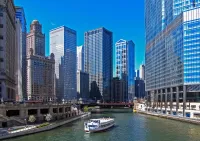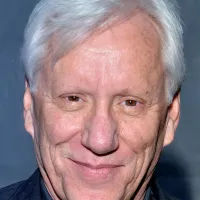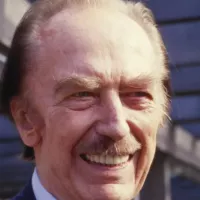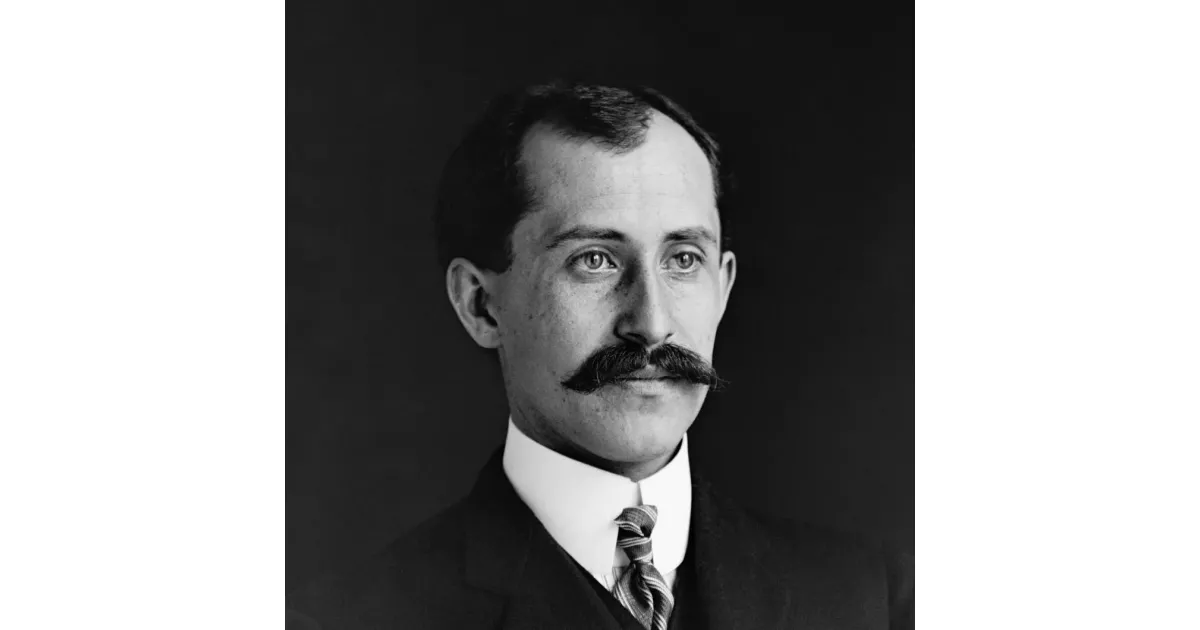Orville and Wilbur Wright, known as the Wright brothers, were American aviation pioneers credited with inventing, building, and flying the world's first successful motor-operated airplane. Their first controlled, sustained flight took place on December 17, 1903, with the Wright Flyer at Kitty Hawk, North Carolina. They continued to improve their designs, creating the Wright Flyer II in 1904, capable of longer flights and maneuvers like circles. In 1905, they introduced the Wright Flyer III, the first truly practical fixed-wing aircraft. Their inventions marked a pivotal moment in aviation history, transforming transportation and ushering in the era of powered flight.
1900: Early Glider Experiments
During 1900-1901, the Wright brothers carried out crucial glider experiments that were discussed during Wilbur's lecture.
1900: Wilbur's Initiative
In 1900, Wilbur Wright took the initiative in the early stages of their aviation work.
1900: Kitty Hawk Chosen for Experiments
In 1900, the Wright brothers chose Kitty Hawk, North Carolina as the location for their manned gliding experiments due to its regular breezes, soft sandy landing surface, and relative privacy.
1900: Initial Gliding Tests
In the early autumn of 1900, the Wright brothers conducted their initial gliding tests at Kitty Hawk, with Wilbur piloting the glider as a kite.
1900: Extensive Glider Tests Begin
Starting in 1900, the Wright brothers conducted extensive glider tests to hone their piloting skills.
1900: Early Glider Experiments and Lift Miscalculations
The Wright brothers conducted early glider experiments around 1900. They discovered in later testing that the lift generated by their 1900 glider had been significantly miscalculated due to using an incorrect Smeaton value.
September 18, 1901: Wilbur Wright's Lecture to the Western Society of Engineers
On September 18, 1901, Wilbur Wright gave a lecture to the Western Society of Engineers in Chicago, presenting their glider experiments of 1900-1901. This was the first public account of their work, documented in the society's journal and a separate offprint titled "Some Aeronautical Experiments."
December 1901: Conclusion of Wind Tunnel Tests
By December 1901, the Wright brothers concluded their significant wind tunnel experiments which were crucial to their understanding of flight.
December 1901: Wind Tunnel Tests and Data Analysis
Between October and December 1901, the Wright brothers constructed a wind tunnel and performed tests on miniature wings. Using balances made of bicycle spokes and scrap metal, they measured lift and drag, gaining crucial data that revealed the inaccuracies in their earlier lift calculations and validated Lilienthal's published data.
1901: Wilbur Wright's Speeches on Flight
In 1901, Wilbur Wright delivered speeches about flight, which later became relevant in a German court case regarding the Wright patent.
1901: Glider Development and Control Challenges
In 1901, Wilbur Wright faced challenges with adverse yaw while trying to turn the 1901 glider, a problem addressed in their later patent.
1901: Calculations and Analysis of Lift
In 1901, Wilbur Wright performed calculations to determine the correct Smeaton coefficient for lift. Using data from kite and glider tests, his results showed that the coefficient was around 0.0033, rather than the traditional 0.0054, and closer to the value used by Langley. This significantly impacted their understanding of lift calculations.
1901: 1901 Glider Experiments
In 1901, the Wright brothers conducted glider experiments, achieving flights ranging from 50 to 400 feet. While experiencing stalls, the forward elevator's parachute effect enabled safe landings. These tests reinforced their commitment to the canard design until 1910. However, the glider generated less lift than expected and displayed adverse yaw during turns.
1901: 1901 Glider Flight Characteristics
In 1901, the Wright brothers observed a sideways sliding motion and uncontrolled pivoting in their glider during banking maneuvers, a challenge they sought to address in their subsequent designs.
1901: Chanute Visits Wright Brothers' Camp
Octave Chanute visited the Wright brothers at their Kitty Hawk camp in 1901, observing gliding experiments.
1901: Return to Kitty Hawk and Workshop Construction
The Wright brothers returned to Kitty Hawk in the summer of 1901, bringing supplies to be self-sufficient and constructing a workshop and hangar for their glider.
1902: Development of Three-Axis Control System
During 1902, the Wright brothers made a significant breakthrough by implementing a three-axis control system on their glider, which involved wing-warping for roll, a forward elevator for pitch, and a rear rudder for yaw. This system revolutionized flight control.
1902: 1902 Glider Flight Tests and "Well Digging"
During 1902, the Wright brothers' glider faced challenges in crosswinds and steep turns, sometimes resulting in a spiraling descent they termed "well digging." This phenomenon occurred due to the interaction of the newly added vertical fins with the glider's inherent sideways slide during banking.
1902: 1902 Glider Design and Development
In 1902, the Wright brothers designed a new glider with a flatter airfoil, a longer, narrower wingspan, and a fixed rear vertical rudder. These improvements were based on their wind tunnel tests, which highlighted the importance of aspect ratio for improved lift-to-drag ratio.
1902: Wilbur Takes the Lead in Gliding
It is believed that Wilbur did all the gliding until 1902, possibly for protective reasons.
1902: Wright Brothers Glider Experiments
The Wright brothers conducted glider experiments in 1902, informing their later work on powered flight.
1902: Patent Illustrates Non-Powered Flying Machine
The Wright brothers' patent from 1902 illustrates a non-powered flying machine, specifically the 1902 glider, focusing on the control method.
1902: Glider Training
The Wright brothers' training with gliders in 1902 prepared them for the challenges of piloting the unstable 1903 Wright Flyer.
March 1903: Propeller Efficiency and Engine Development
In March 1903, Wilbur Wright recorded that their prototype propeller achieved 66% efficiency. Later tests revealed it was even more efficient. Unable to find a suitable engine from manufacturers, they commissioned their mechanic, Charlie Taylor, who constructed one in just six weeks.
March 23, 1903: Patent Application for "Flying Machine"
On March 23, 1903, the Wright brothers applied for their famous patent for a "Flying Machine," based on the design and control system developed through their successful 1902 glider experiments.
June 24, 1903: Wilbur's Presentation to Western Society of Engineers
On June 24, 1903, Wilbur Wright presented to the Western Society of Engineers in Chicago, detailing their 1902 glider experiments but omitting their powered flight plans.
December 13, 1903: No Flight Attempts
No flight attempts were made on December 13, 1903, due to it being a Sunday.
December 14, 1903: First Flight Attempt
On December 14, 1903, Wilbur Wright made the first powered flight attempt. It lasted three seconds and resulted in minor damage to the Flyer, a partial success.
December 1903: Langley's Aerodrome Tests
In December 1903, Samuel P. Langley conducted tests of his manned Aerodrome, which resulted in failures.
December 17, 1903: First Successful Airplane Flight
On December 17, 1903, the Wright brothers made the first controlled, sustained flight of a powered, heavier-than-air aircraft, the Wright Flyer.
1903: Wright Flyer Fabric on Mars
A piece of wing fabric from the 1903 Wright Flyer was attached to Ingenuity helicopter on Mars.
1903: Boulton's Patent
Between 1903 and 1906, the existence of M.P.W. Boulton's 1868 patent for an aileron control system was not widely known, and its potential impact on the Wright brothers' legal case remained unknown.
1903: Last Visit from Chanute
Chanute's final visit to the Wright camp was in 1903; he did not witness the powered flights.
1903: First Flight Controversy
In 1903 and prior, several figures, including Clément Ader, Gustave Whitehead, Richard Pearse, and Karl Jatho, all staked claims as being the first to fly a plane using variously documented tests. Debate continues on who deserves to be credited with the first successful flights.
1903: Chanute's Public Disclosures
In 1903, Octave Chanute made public disclosures about aviation, which were later cited in a German court case related to the Wright patent.
1903: Wright Flyer Construction and Cost
In 1903, the Wright brothers completed their Wright Flyer for less than $1,000, significantly less than the $50,000 given to Samuel Langley. The Flyer had a 40.3 ft wingspan, weighed 605 lb, and featured a 12 horsepower engine.
1903: Construction of the Wright Flyer
In 1903, the Wright brothers constructed the powered Wright Flyer, using spruce and muslin. They designed and carved their own propellers, drawing upon their understanding of aerodynamics and using wind tunnel data, and had a gasoline engine custom-built. They determined that an aeronautical propeller could be considered a wing rotating vertically, leading to innovative propeller designs.
1903: Wright Flyer's Creation
In 1903, the Wright brothers created the Kitty Hawk Flyer, a pivotal invention in aviation history.
1903: Wright Brothers' Control-Focused Design
In 1903, the Wright brothers prioritized pilot control in their aircraft designs, contrasting with other inventors who focused on inherent stability. They implemented anhedral wings in their first powered flyer for better control in gusty winds.
1903: Initial Patent Application
In 1903, the Wright brothers wrote and submitted their first patent application for their flying machine, which was rejected.
1903: First Powered Flights
In late 1903, the Wright brothers made their first powered flights.
1903: Wright Brothers' Piloting Skill
The Wright brothers developed exceptional piloting skills to control their unstable 1903 Wright Flyer, as evidenced in 1985 analysis.
1903: Agreement on Wright Flyer Display
The agreement for the Smithsonian's acquisition of the 1903 Wright Flyer included strict conditions for its display, ensuring its proper recognition in aviation history.
January 1904: Hiring of Patent Attorney
In January 1904, the Wright brothers hired Ohio patent attorney Henry Toulmin after their initial patent application was rejected.
July 1, 1904: French Patent Granted
On July 1, 1904, the Wright brothers were granted a French patent for their flying machine.
September 20, 1904: First Complete Circle Flight
On September 20, 1904, Wilbur Wright achieved the first complete circle in history by a manned heavier-than-air powered machine.
October 1904: Visit from Colonel J.E. Capper
In October 1904, Colonel J.E. Capper visited the Wright brothers and was impressed by their work.
1904: Wright Flyer II Development
In 1904, the Wright brothers developed the Wright Flyer II, which achieved longer flights and the first aerial circle.
1904: Construction of Wright Flyer II and Huffman Prairie Airfield
In 1904, the Wrights built the Wright Flyer II and established an airfield at Huffman Prairie near Dayton, Ohio, known as Simms Station.
1904: Limited Documentation of Flights
The only photographs of the 1904-1905 flights were taken by the Wright brothers themselves.
1904: Flight Challenges and Innovations at Huffman Prairie
Throughout 1904 at Huffman Prairie, the Wrights tackled stability issues and hard landings, eventually exceeding their Kitty Hawk flight distance. They also experimented with a weight-powered catapult.
1905: Construction of Wright Flyer III and Design Improvements
In 1905, the Wright brothers constructed the Wright Flyer III. After a crash, they implemented design changes including enlarging the elevator and rudder, and separating the rudder control.
1905: Wright Flyer III Development
In 1905, they created the Wright Flyer III, the first truly practical fixed-wing aircraft.
1905: Preservation of Wright Flyer III
Orville Wright supervised the reclamation and preservation of the 1905 Wright Flyer III, considered the first practical airplane.
1905: Limited Documentation of Flights
The only photographs of the 1904-1905 flights were taken by the Wright brothers themselves.
February 10, 1906: European Skepticism and Press Derision
On February 10, 1906, European newspapers, particularly in France, openly mocked the Wright brothers, calling them bluffers and questioning their claims.
May 22, 1906: Patent Granted for Flying Machine
On May 22, 1906, the Wright brothers were granted U.S. Patent 821393 for "new and useful Improvements in Flying Machines" after hiring patent attorney Henry Toulmin.
1906: Boulton's Patent Remains Unknown
Boulton's 1868 patent was not widely known during the period between 1903 and 1906, a fact considered relevant by aviation historian C.H. Gibbs-Smith.
1906: Wright Patent Drawings Become Public
By 1906, the detailed drawings in the Wright brothers' patents became publicly available.
1906: Langley's Death and Smithsonian Display
Following Langley's death in 1906, the Smithsonian displayed the Aerodrome as the first heavier-than-air craft "capable" of flight, sparking a conflict with Orville Wright.
1906: Public Skepticism and Derision
In 1906, the Wright brothers faced significant skepticism and derision, especially from the European press, who questioned their claims of successful flights.
July 4, 1908: Curtiss's Infringement Warning
Following Curtiss's one-kilometer flight in the AEA June Bug on July 4, 1908, the Wright brothers warned him against infringing their patent by using ailerons.
September 1908: Wright Brothers' Century Magazine Article
In September 1908, the Wright brothers published an article in Century Magazine, highlighting the significance of their wind tunnel tests and their decision to rely on their own research, discarding previous unreliable calculations used for flying machines.
1908: Archdeacon's Admission of Injustice
In 1908, Ernest Archdeacon, after witnessing the Wright brothers' flights in France, publicly acknowledged his earlier injustice towards them and their claims.
1908: Curtiss and AEA Develop Ailerons
In 1908, Glenn Curtiss and the Aerial Experiment Association (AEA) developed wingtip ailerons for their Aerodrome No. 2, the AEA White Wing.
October 4, 1909: Flight at Hudson-Fulton Celebration
On October 4, 1909, Wilbur Wright made a significant flight witnessed by about a million people in Manhattan during the Hudson-Fulton Celebration. He flew from Governors Island to Grant's Tomb and back, with a canoe attached to the aircraft as a flotation device.
November 22, 1909: Wright Company Incorporation
On November 22, 1909, the Wright Company was established. The Wright brothers, Wilbur and Orville, exchanged their patents for $100,000, one-third of the company's shares, and royalties. The company set up its factory in Dayton, a flying school at Huffman Prairie, and headquarters in New York City. Wilbur served as president and Orville as vice president.
1909: First Use of Aerial Photography
In 1909, a short silent film titled "Wilbur Wright und seine Flugmaschine" was released and is considered the first instance of motion picture aerial photography filmed from a heavier-than-air aircraft.
1909: Wright Brothers File Lawsuit Against Curtiss
In 1909, the Wright brothers initiated a lawsuit against Glenn Curtiss for selling an airplane with ailerons, starting a long legal battle.
May 25, 1910: First Flight with Wilbur and Father
On May 25, 1910, Orville piloted two important flights at Huffman Prairie. The first was with Wilbur as his passenger, marking the only time the brothers flew together. The second was with their 82-year-old father, Milton.
November 7, 1910: First Commercial Air Cargo Transport
On November 7, 1910, the Wright Company executed the first documented commercial air cargo flight. They transported silk from Dayton to Columbus, Ohio for the Morehouse-Martens Department Store. This event marked a pivotal moment in aviation history, demonstrating the practical application of airplanes beyond exhibitions.
1910: Abandonment of Canard Design
By 1910, the Wright brothers abandoned the canard design they had championed since their early glider experiments.
1910: Wilbur Leads Patent Struggle
From 1910 until his death in 1912, Wilbur Wright dedicated himself to the patent disputes, impacting the brothers' work on new designs.
1910: Ida Holdgreve Joins Wright Company
In 1910, Ida Holdgreve became the head seamstress at the Wright Company Factory. She was responsible for creating the fabric coverings for the aircraft's components, highlighting the importance of skilled craftspeople in early aviation manufacturing.
1910: Formation of the Wright Exhibition Team
In 1910, due to the low demand for airplanes, the Wright brothers formed an exhibition team. The team showcased the capabilities of their aircraft at air shows and competitions. This marked a move towards commercializing their invention.
1910: Wright Brothers Flying School Established
In 1910, the Wright Brothers established a flying school at Huffman Prairie.
1910: Wright Flyer Redesign
In 1910, the Wright brothers modified the Wright Flyer's design. They shifted the horizontal elevator to the rear and incorporated wheels while retaining the skids. This change improved the aircraft's control, especially with increasing speeds. This model was later known as the "Model B".
June 1911: Wilbur Wright's Last Flight
Following a training flight he provided to a German pilot in Berlin in June 1911, Wilbur Wright ceased flying and focused on business matters and lawsuits related to the Wright Company.
November 1911: Disbanding of the Wright Exhibition Team
In November 1911, the Wright brothers disbanded their exhibition pilot team. This followed fatal crashes involving pilots Ralph Johnstone and Arch Hoxsey earlier in the year. Despite Wilbur Wright's reservations about the exhibition business, the team was initially formed in the spring of 1910 to showcase their aircraft and generate revenue. Unfortunately, several other former team members also died in crashes after the team was disbanded.
1911: Wright Airplanes Fall Behind European Designs
By 1911, Wright airplanes were considered less advanced than European aircraft due to the Wright brothers' focus on patent litigation.
1911: Calbraith Perry Rodgers' Transcontinental Flight
In 1911, Calbraith Perry Rodgers, trained at the Wright Brothers Flying School, made the first transcontinental flight across the United States in a Wright Model EX.
1911: Model B Flown for Last Time
Orville Wright's last flight as a pilot was conducted using the 1911 Wright Model B.
April 1912: Wilbur Wright's Illness Begins
Wilbur Wright became ill during a business trip to Boston in April 1912, an illness sometimes attributed to consuming bad shellfish.
May 1912: Wilbur Wright's Death
After returning to Dayton in early May 1912, Wilbur Wright's condition worsened, and he was diagnosed with typhoid fever. He died at home on May 30, 1912, at the age of 45.
May 30, 1912: Wilbur Wright's Death
On May 30, 1912, Wilbur Wright passed away.
1912: Wright Model C Crashes and Investigation
Between 1912 and 1913, multiple crashes of Wright Model C airplanes raised concerns about their safety. Orville Wright maintained that pilot error caused the crashes, but a government investigation deemed the aircraft "dynamically unsuited for flying."
1912: Wilbur Wright's Death
Wilbur Wright passed away in 1912 due to typhoid fever, an event potentially exacerbated by the strain of the patent battles.
February 1913: Initial Legal Victory Against Curtiss
In February 1913, the Wright brothers won their initial lawsuit against Curtiss, with the judge ruling that ailerons were covered under their patent.
1913: Continued Wright Model C Crashes and Investigation
By 1913, several more crashes of the Wright Model C solidified safety concerns and ultimately resulted in the discontinuation of its use in the American military.
1913: Damage from Great Dayton Flood
Some of the Wright brothers' photographs were damaged in the Great Dayton Flood of 1913.
January 1914: Court Upholds Verdict Against Curtiss
In January 1914, a U.S. court upheld the previous ruling against the Curtiss company in the patent dispute.
1914: Smithsonian and Curtiss Modify Aerodrome
In 1914, the Smithsonian allowed Glenn Curtiss to modify the Aerodrome and conduct test flights, further fueling the dispute with Orville Wright.
1914: Smithsonian's Misleading Statements Addressed
In 1942, the Smithsonian corrected the inaccurate statements they had previously made regarding the 1914 tests on the Langley's Aerodrome.
1914: Orville Wright Wins Collier Trophy
Orville Wright won the Collier Trophy in 1914 for his development of the automatic stabilizer on the Wright Model E.
1914: Move to Hawthorn Hill
Orville, Katharine, and Milton Wright moved to Hawthorn Hill in the spring of 1914.
1914: Hawthorn Hill Completed
The Wright family's new house, Hawthorn Hill, was completed in 1914 in Oakwood, Ohio. Wilbur Wright, however, did not live to see its completion.
1915: Orville Sells Wright Company
Orville Wright sold the Wright Company in 1915 after achieving a legal victory in the patent battle.
1915: Wright Company Sold
Orville Wright sold the Wright Company in 1915.
1916: Wright Brothers Flying School Operations
The Wright Brothers Flying School operated between 1910 and 1916, training a total of 115 pilots. The school provided instruction and training in flying Wright aircraft.
1916: Wright-Martin Merger
The Wright Company became part of Wright-Martin in 1916.
April 3, 1917: Milton Wright's Death
Milton Wright, the Wright brothers' father, died in his sleep on April 3, 1917, at the age of 88.
April 1917: US Enters World War I
The United States entered World War I in April 1917, a time when the country lacked sufficient American-designed airplanes due to the patent disputes that had hampered aviation development.
1917: Milton Wright's Death
Milton Wright, the father of Wilbur and Orville, passed away in 1917.
1917: Wright Patent Expires
The Wright brothers' patent expired in 1917, concluding the legal battles in Europe.
1917: Formation of Manufacturers Aircraft Association
Under pressure from the government due to World War I, the Manufacturers Aircraft Association was formed in 1917 to manage cross-licensing of aviation patents.
1918: Orville Wright's Last Flight as Pilot
Orville Wright made his last flight as a pilot in 1918, flying a 1911 Model B. He subsequently retired from business and took on an advisory role in aviation.
1920: Reuchlin Wright's Death
Reuchlin Wright, one of the Wright brothers' siblings, died in 1920.
1926: Katharine Wright's Marriage
Katharine Wright married Henry Haskell in 1926, an event that caused a rift between her and Orville.
1928: Orville Loans Flyer to London Science Museum
In 1928, Orville Wright loaned the Kitty Hawk Flyer to the London Science Museum due to his ongoing dispute with the Smithsonian.
1928: Daniel Guggenheim Medal Established
The Daniel Guggenheim Medal was established in 1928 by the Daniel Guggenheim Fund for the Promotion of Aeronautics.
March 3, 1929: Katharine Wright's Death
Katharine Wright died of pneumonia on March 3, 1929.
1929: Katharine Wright's Death
Katharine Wright, the Wright brothers' sister, died in 1929.
1929: Wright and Curtiss Companies Merge
The Wright Aeronautical Corporation and the Curtiss Aeroplane company merged in 1929, forming the Curtiss-Wright Corporation.
1930: Orville Wright Receives Guggenheim Medal
Orville Wright received the first Daniel Guggenheim Medal in 1930.
1936: Orville Wright Elected to National Academy of Sciences
Orville Wright was elected to the National Academy of Sciences in 1936.
1937: Wright Home and Shop Relocated
In 1937, the Wrights' bicycle shop and home were moved from Dayton, Ohio, to Greenfield Village in Dearborn, Michigan.
1939: National Aviation Day Established
In 1939, President Franklin Delano Roosevelt proclaimed Orville Wright's birthday as National Aviation Day.
1939: Lorin Wright's Death
Lorin Wright, another of the Wright siblings, died in 1939.
1942: Smithsonian Recants Claims about Aerodrome
In 1942, facing significant criticism, the Smithsonian acknowledged misrepresentations about the Aerodrome, paving the way for reconciliation with the Wright estate.
April 19, 1944: Orville Wright's Final Flight
On April 19, 1944, Orville Wright took his last airplane flight aboard a Lockheed Constellation, piloted by Howard Hughes and Jack Frye.
January 30, 1948: Orville Wright's Death
On January 30, 1948, Orville Wright passed away.
November 23, 1948: Smithsonian Acquires Wright Flyer
On November 23, 1948, the Smithsonian purchased the Wright Flyer for a nominal fee, finally resolving the long-standing disagreement over the aircraft's historical significance.
December 17, 1948: Wright Flyer Displayed at Smithsonian
On December 17, 1948, the Wright Flyer went on public display at the Smithsonian museum, marking the 45th anniversary of its only successful flight. The Flyer was formally transferred to the Smithsonian by the Wright brothers' nephew, Milton.
1948: Wright Flyer Display at Smithsonian
In 1948, the restored Wright Flyer was finally installed in the Smithsonian Institution for permanent display.
1969: Wright Flyer Fabric on the Moon
In 1969, Neil Armstrong carried a piece of the Wright Flyer to the Moon during the Apollo 11 mission.
1985: Analysis of 1903 Wright Flyer Stability
A 1985 analysis revealed the 1903 Wright Flyer's inherent instability, making it challenging to control except for the highly skilled Wright brothers.
April 16, 1994: Wilbur Wright's Posthumous Diploma
Wilbur Wright was posthumously awarded his high school diploma on April 16, 1994.
December 17, 2003: Centennial Flight Recreation Attempt
On December 17, 2003, Kevin Kochersberger attempted to recreate the Wright brothers' first flight but failed due to the instability of the replica aircraft.
February 18, 2021: Ingenuity Arrives on Mars
On February 18, 2021, the Ingenuity helicopter arrived on Mars, attached to the Perseverance rover.
May 7, 2021: Ingenuity Completes Mars Flights
Between April 19 and May 7, 2021, Ingenuity made five flights from Wright Brothers Field on Mars, subsequently making 72 flights from different areas in total.
2023: Historical Cost Comparison
In 2023, the equivalent value of $1,000 in 1903 is calculated to be $34,000, highlighting the relative low cost of the Wright Flyer's construction.
Mentioned in this timeline

Dayton is a city in Ohio serving as the county...
Germany officially the Federal Republic of Germany is a Western...
North Carolina is a Southeastern U S state the th-largest...
France officially the French Republic is primarily located in Western...

Chicago is the most populous city in Illinois and the...
Michigan is a peninsular state in the Great Lakes region...
Trending

6 months ago James Wood to compete in 2025 Home Run Derby with Raleigh, Acuña Jr.
1 month ago Ha-Seong Kim opts out of Braves deal, becoming free agent in MLB.

13 days ago Sydney Sweeney stuns in Old Hollywood Glamour at 'The Housemaid' premiere.

Rasul Douglas is an American football cornerback in the NFL Drafted by the Philadelphia Eagles in he played college football...
13 days ago Asante Samuel Jr. Impresses in Week 13 Debut; Watt Struggles, Highsmith shines.

7 months ago Derrick White Prop Bets Analyzed for Celtics vs Knicks Game 5, May 14, 2025
Popular

Candace Owens is an American conservative political commentator and author...

Ilhan Omar is an American politician currently serving as the...

XXXTentacion born Jahseh Dwayne Ricardo Onfroy was a controversial yet...

Frederick Christ Trump Sr - was an American real estate...

Charles James Charlie Kirk was a prominent American right-wing political...

Oprah Winfrey an American talk show host television producer actress...
